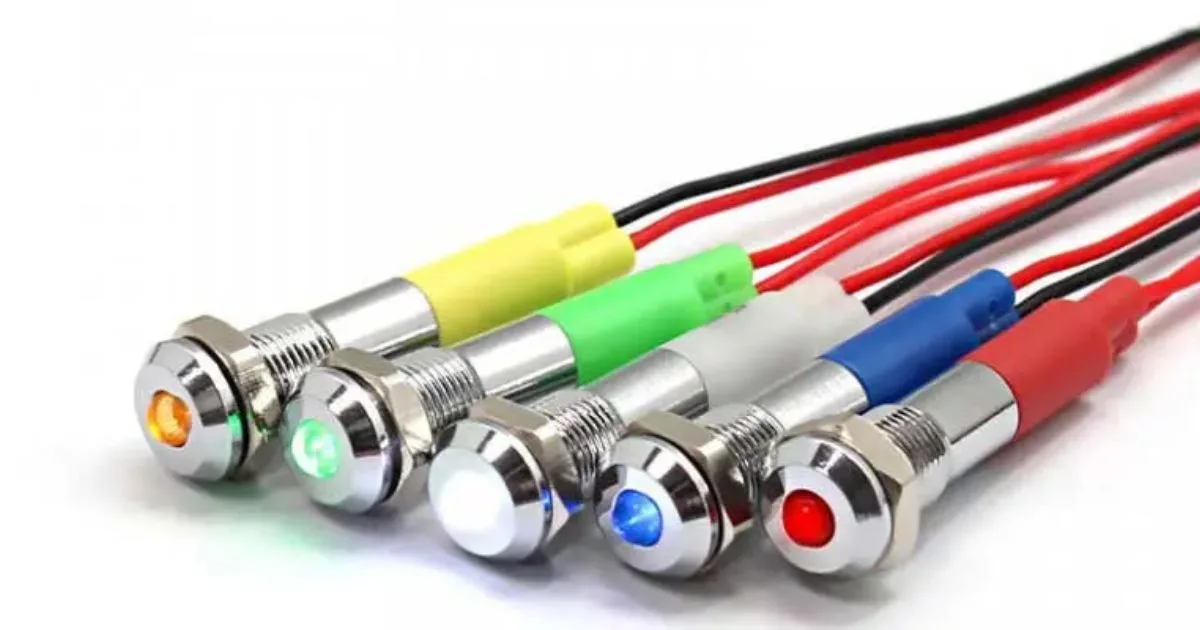
Your car's indicator lights are like its way of talking to you. They signal what it needs or if something's wrong.
Imagine driving and suddenly, a light on your dashboard flickers on. This could be a simple heads-up or a warning of a serious issue. Checking your indicator lights is crucial for safe driving and maintaining your vehicle in top condition. These lights give you vital information about your car's health. They alert you to possible issues with your engine, battery, oil pressure, and more. Ignoring these signals can lead to breakdowns or costly repairs. It's not just about avoiding trouble; it's about ensuring your safety and that of others on the road. Every light has a meaning, and knowing them could save you time and money. So, let's dive into why these little lights deserve your attention and how they contribute to a smooth, worry-free driving experience.Introduction To Indicator Lights
Indicator lights on a vehicle act like a communication bridge. They alert drivers about the car's status. Understanding these signals is vital for safe driving. Each light on the dashboard serves a specific purpose.The Role Of Indicator Lights In Vehicle Safety
Indicator lights serve as early warning systems. They inform drivers about potential issues. These lights help in maintaining vehicle safety and can prevent accidents.- Brake system alert
- Engine temperature warning
- Battery charge alert
Common Types Of Indicator Lights
Different lights on a car's dashboard have distinct meanings. It's crucial to recognize them to ensure proper vehicle maintenance and safety.| Light | Meaning |
|---|---|
| Check Engine Light | Potential engine issue |
| Oil Pressure Light | Oil level or pressure problem |
| Tire Pressure Light | Tire pressure is low |
 Breaking Down Indicator Light Signals
Breaking Down Indicator Light Signals
Breaking Down Indicator Light Signals
Let's dive into Breaking Down Indicator Light Signals. Your car talks to you through lights on the dashboard. These lights tell if everything is okay or if something needs your attention. Understanding them is key to keeping your car in good shape.Color Codes And Their Meanings
Cars use colors like traffic lights to talk about danger or info. Let's break them down:- Red - Immediate attention needed. Could mean a serious issue.
- Yellow/Orange - Warning. Check soon but not an emergency.
- Green/Blue - All good. Just an info light.
Interpreting Flashing Vs. Steady Lights
Lights can blink or stay on. Each tells us something different:- Flashing - Act fast. This often means a serious problem.
- Steady - Check when you can. It’s less urgent.
Indicator Lights And Legal Requirements
Understanding the legal need for indicator lights is key for all drivers. These lights are not just helpful hints. They are required by law. They tell other road users what you plan to do. This helps keep everyone safe on the road. Let's look at the rules and penalties linked with indicator use.Traffic Laws Regarding Indicator Use
Indicator lights are vital for safe driving. Each country has specific rules. They tell drivers when and how to use their indicators. For example, you must signal before turning or changing lanes. This gives others time to react. Not using indicators can lead to confusion. This increases the risk of accidents.Penalties For Non-compliance
Not following indicator rules can cost you. Fines are common. In some places, you might get points on your driving record. Serious cases can even lead to license suspension. It's not just about the law. It's about respecting other road users. A simple blink can prevent crashes and save lives.The Impact On Driving Safety
Indicator lights play a crucial role in driving safety. They communicate your actions to other drivers, helping prevent accidents. Let's explore how proper signaling and enhanced visibility contribute to road safety.Avoiding Collisions Through Proper Signaling
Turn signals are a driver's way of saying "I'm moving over." Without them, others can't guess your next move. This can lead to dangerous collisions. Always check if your indicator lights work before you drive. It's a simple step that can save lives.Enhancing Visibility On The Road
Indicator lights make your car visible, especially at night or during bad weather. A working signal stands out and alerts others of your presence. This is vital on busy streets or highways. It helps everyone stay aware and safe. So, keep those lights in check. It's a matter of safety, not just a legal requirement. Maintenance Tips For Indicator Lights
Maintenance Tips For Indicator Lights
Maintenance Tips For Indicator Lights
Indicator lights on your vehicle are key to safety and proper function. They alert you to issues that need attention. Proper maintenance of these lights is crucial. Let's dive into how you can keep them in top shape.Regular Checks And Timely Repairs
Regularly checking your indicator lights is a must. It ensures they work when needed. Here's how:- Check lights monthly. Turn on your car and activate each light.
- Look for any lights that are dim or not lighting up.
- Replace bulbs or fuses if needed. This keeps lights bright.
Upgrading Your Indicator Lights
Upgrading your lights can improve visibility and safety. Consider these tips:- Choose LED lights. They last longer and are brighter.
- Ensure upgrades meet legal standards. Check with a professional.
- Professional installation is best. This ensures correct fit and function.
Real-world Scenarios
Indicator lights on your vehicle act as vital communication tools. They alert you to issues needing immediate attention. Let's explore some real-world scenarios where checking your indicator lights can make a difference.Common Mishaps Due To Indicator Neglect
Ignoring indicator lights can lead to mishaps. Many drivers learn this the hard way. Here are common issues:- Engine damage from low oil pressure
- Accidents due to faulty brake systems
- Battery drain from alternator faults
Testimonials: Accidents Prevented By Indicator Use
Here are stories from drivers who heeded their indicators:| Name | Issue | Outcome |
|---|---|---|
| John | Brake Warning Light | Brakes fixed before failure |
| Lisa | Temperature Warning | Engine saved from overheating |
 Technological Advances In Indicator Lights
Technological Advances In Indicator Lights
Technological Advances In Indicator Lights
Technological Advances in Indicator Lights have transformed how we interact with our vehicles. These advancements make driving safer and more intuitive. Let's delve into the details.Smart Indicator Systems
Modern vehicles come equipped with Smart Indicator Systems. These systems do more than just show if a light is on or off. They provide detailed information about the car's condition. For example, they can tell you if a light bulb needs replacing or if there's a brake system issue.- Alerts for low fuel, engine issues, and more.
- Warnings about tire pressure and brake pad wear.
- Automatic notifications for regular maintenance.
Integration With Vehicle Safety Features
Indicator lights now work together with vehicle safety features. This integration enhances driving safety. Examples include:- Lane Departure Warning lights blink if you drift from your lane.
- Collision Alert lights flash when a potential impact is detected.
- Parking Assist indicators guide you when parking in tight spots.
Frequently Asked Questions
What Do Indicator Lights On My Dashboard Mean?
Indicator lights on your dashboard serve as alerts or warnings. They inform you about various vehicle functions or malfunctions, such as engine issues, oil pressure, battery status, or brake system alerts. Understanding these lights helps in maintaining vehicle health and safety.Why Should I Not Ignore My Car's Warning Lights?
Ignoring your car's warning lights can lead to serious vehicle damage or compromise your safety. These lights indicate potential issues that, if unaddressed, could result in costly repairs, breakdowns, or even accidents. Timely attention ensures your car remains reliable and safe to drive.How Often Should I Check My Vehicle's Indicator Lights?
You should check your vehicle's indicator lights regularly, ideally each time you start your car. This ensures you're immediately aware of any alerts and can address them promptly. Regular checks are crucial for early detection of potential issues, maintaining vehicle health.Can Indicator Lights Signal An Emergency?
Yes, certain indicator lights signal emergencies that require immediate attention. For example, a flashing check engine light or an oil pressure warning light suggests urgent issues that could lead to significant damage or risk if ignored. Prompt action is necessary when these lights illuminate.Conclusion
Regular checks on indicator lights keep your vehicle safe and reliable. These signals are your car's way of communicating. They alert you to potential issues early on. Ignoring them could lead to costly repairs or safety hazards. Make it a habit to monitor these important alerts. They ensure your car functions at its best and keeps you safe on the road. Remember, a quick glance at your dashboard can save time and money. Stay alert and drive with confidence, knowing you're taking the right steps for your vehicle's health.Disclosure
Some links may be affiliate links. That means we may earn a small commission at no extra cost to you.